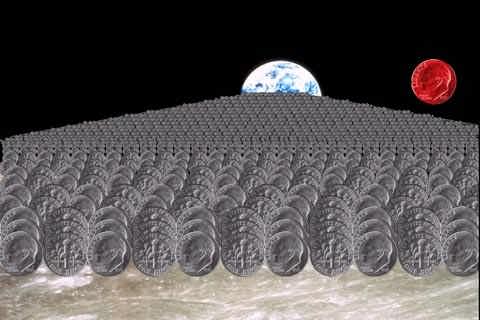 |
First | Previous | Next | Last | | Index | Home Slide 10 of 49 The laws of physics are designed with such precision that it is almost inconceivable that they could be the result of chance. For example, take the ratio of the number of electrons to protons. This ratio must be exactly equal to one to one to better than one part in 1037 (1037 = 10 to the 37th power, or "1" followed by 37 zeros) otherwise electromagnetic forces would have superseded gravitational forces and no galaxies, stars or planets would have ever formed in the entire history of the universe. The likelihood of this occurring by chance is described by Dr. Hugh Ross below: "One part in 1037 is such an incredibly sensitive balance that it is hard to visualize. The following analogy might help: Cover the entire North American continent in dimes all the way up to the moon, a height of about 239,000 miles (In comparison, the money to pay for the U.S. federal government debt would cover one square mile less than two feet deep with dimes.). Next, pile dimes from here to the moon on a billion other continents the same size as North America. Paint one dime red and mix it into the billion of piles of dimes. Blindfold a friend and ask him to pick out one dime. The odds that he will pick the red dime are one in 1037."1 Reference: |
Last updated March 31, 2008
